On Sunday, May 25th, 2025, I said goodbye to my fellow Mitchell Scholars in Galway.
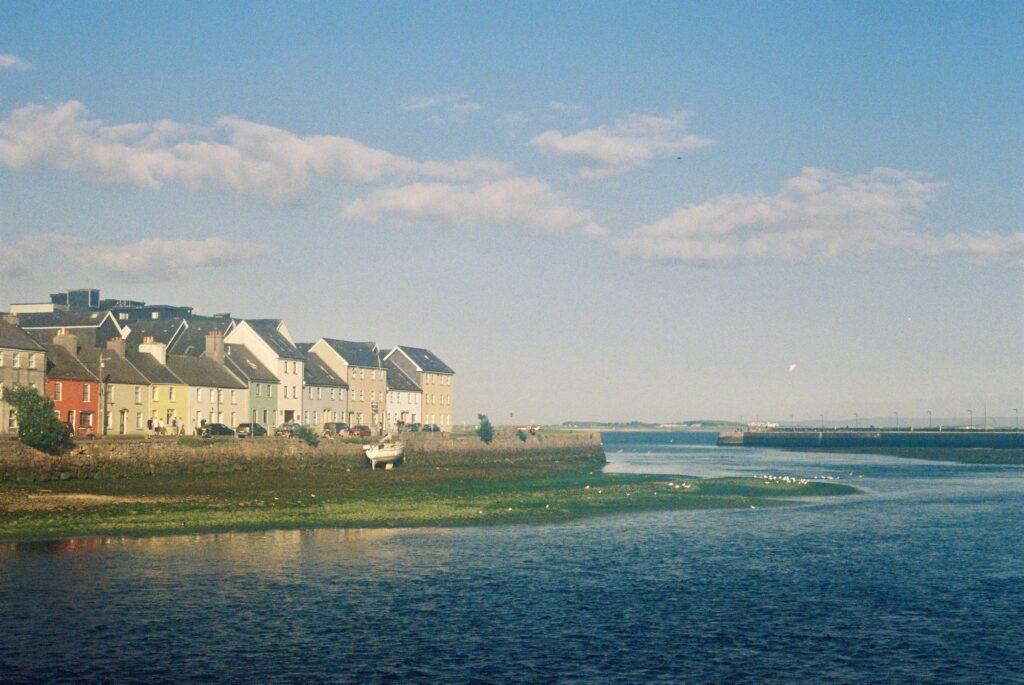
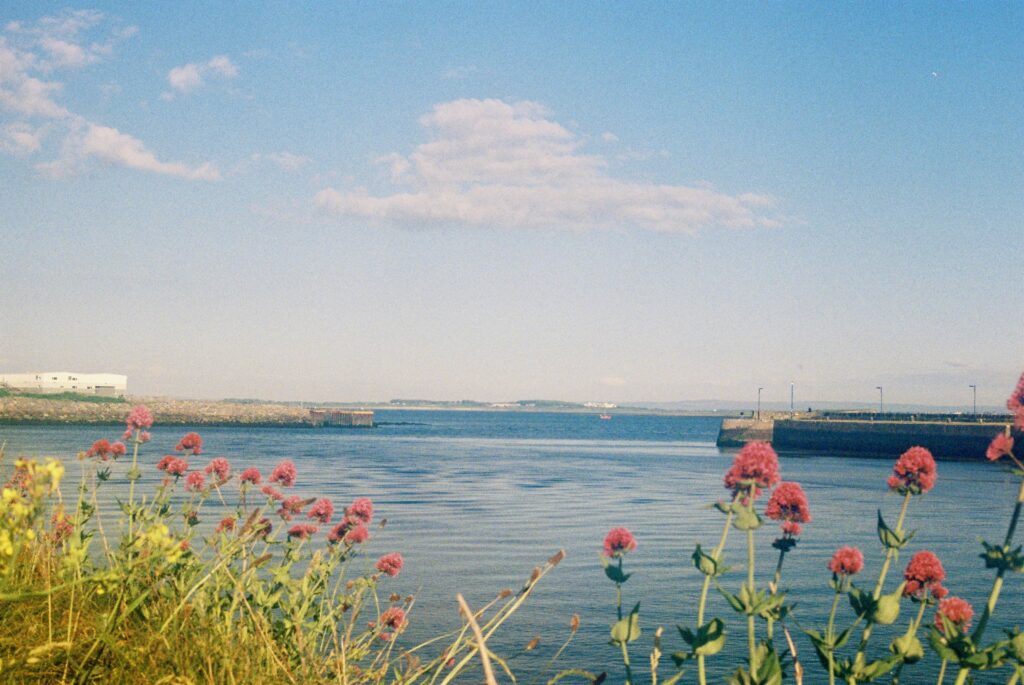

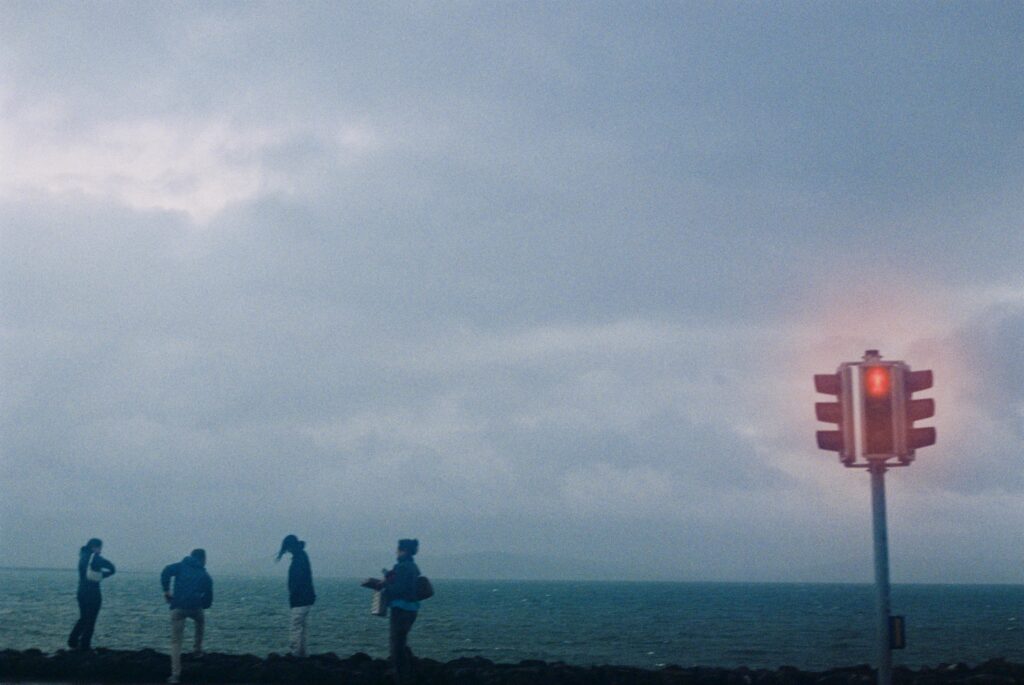
Tearful hugs were exchanged, and I reluctantly boarded the train back to Dublin.
That’s it. That’s my blog post. The End.
kidding!
Now for the epilogue…
Three days after returning from Galway (May 28th), I went backpacking in the Wicklow Mountains with my family: thirty-five miles in three days, starting at Marlay Park in South Dublin, and ending at the ancient monastic settlement in Glendalough.
It was a bittersweet journey- and while I relished this brief moment with those most dear to me (my mother and brother), I was acutely aware of the absence of another group of loved ones- eleven of them, to be exact.
Trudging through the windy moors gave me plenty of time to think.
It’s not like I was in the habit of talking to all of the Mitchell Scholars all of the time- but even in words unspoken, and texts un-sent, I could feel a new (preventative) sense of distance. Most folks had returned to the States, but I’d be here all summer. Time-zone differences make conversations difficult to sustain, and smiles difficult to picture. The Atlantic Ocean suddenly felt like a morass of molasses. “An ugly transmutation”, I thought- some perverse reminiscence of Christ’s first miracle.
^Was that over-the-top? I’ve been getting more adventurous with my prose. I’m probably reading too much Joyce. Anyway…
On the second day of our hike in the Wicklow Mountains, we summited Djouce– a 725 meter peak notable for its views of the greater Dublin area. Irish mountains have a curious combination of qualities- they are mostly bare and devoid of trees, so it’s easy to catch a good view. However, they are also quite short: so when you’re standing at the top of an Irish mountain, you aren’t all that far from the things you’re looking at. When I stand atop Pikes Peak in Colorado (14,107 ft, 4,300m, and ultra-prominent), I can see much further than I can from the summit of little Djouce. But on Pikes Peak, I am so far up that many details of the Rocky Mountain wilds below are indiscernible. A far view isn’t necessarily a good view. The Wicklow Mountains, being both barren and diminutive, make for great views. On a clear day on Djouce, you can see as far east as Wales, and as far south as Wexford. But nearer at hand, you can also see Dublin and all its suburbs in keen detail. Wales, and individual sheep in someone’s backyard, all in one view. It almost feels like dream logic, like reading an I Spy book.
Sitting on top of Djouce, my back against a stone slab, staring out over the coast, I saw something I recognized- an almost-imperceptibly-small white rectangle, nestled in a peninsula jutting into the sea near Bray. Humor me to backtrack in time, and I’ll explain…
Sept. 2024
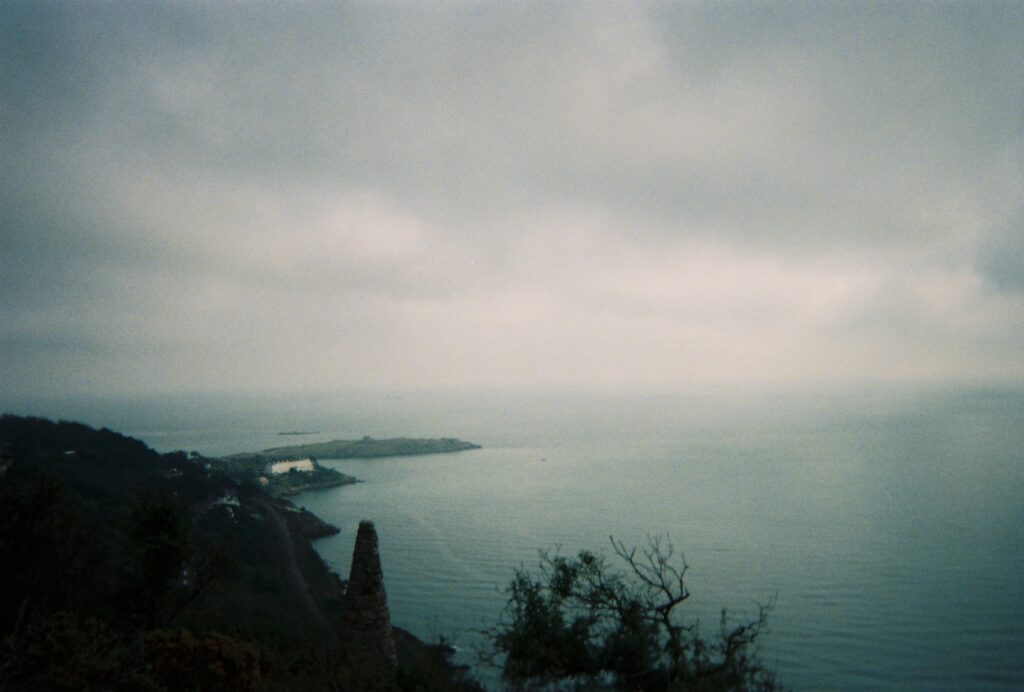
The white building in this photo is the Sorrento Terrace, a row of townhouses famed for their picturesque situation on the coast near Dalkey Island. The photo above shows a view of Sorrento Terrace from Killiney Hill, a park overlooking the coast between Dun Laoghaire and Bray.
Designed by the 29th Provost of Trinity College, Richard MacDonnell, and built in the 1840s1, the Sorrento Terrace has since become an iconic subject for local photographers and landscape painters. This fame has bestowed upon these townhouses a mythic status that has made them Ireland’s most expensive properties- dubbed “Millionaire Row” by locals2. It is also one of my favorite views in Ireland. I took the picture above during our first Mitchell gathering of the year in Dublin.
Now fast forward eight months, to a footpath on the Wicklow Way….
June 2025
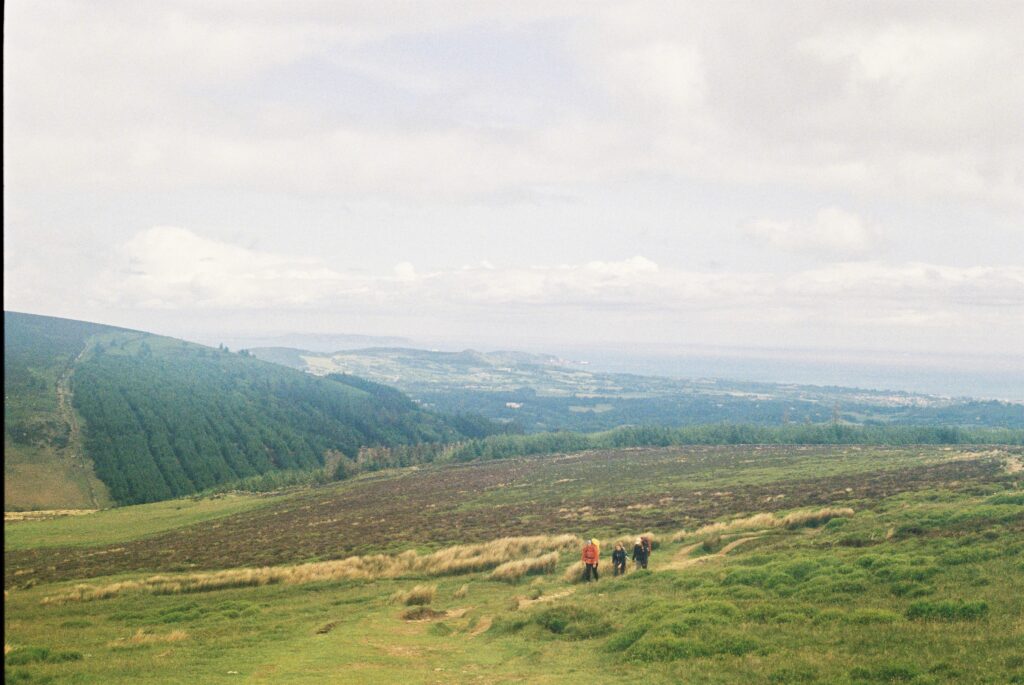
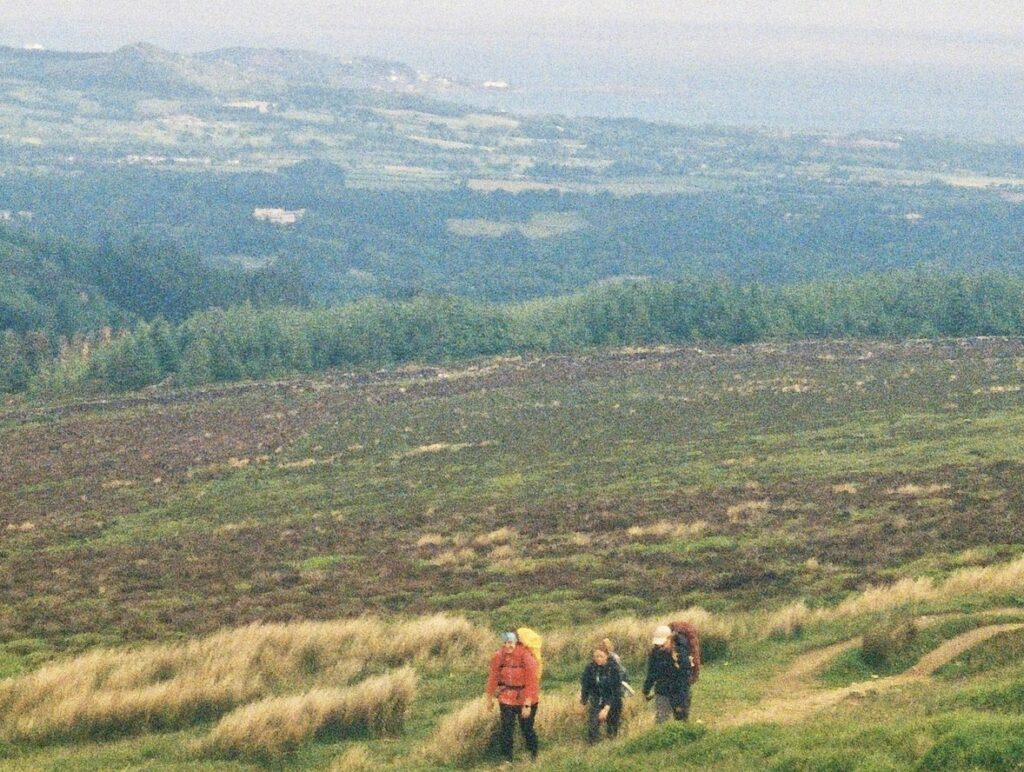

Do you see it?
That white speck in the distance is Sorrento Terrace- this time, in a photo I took last week in the slopes of Djouce.
Sitting on the side of that mountain, looking down at the Sorrento Terrace from a new point of view, I had an “a-ha” moment. My perspective and disposition suddenly shifted.
I recalled the word “epiphany”, brought into popular vernacular by James Joyce in his Portrait of the Artist as a Young Man3 ca. 1916. In this book, Joyce introduces his definition of epiphany as “a sudden spiritual manifestation” induced by a “triviality”- a moment of revelation where the “spiritual eye” of the beholder comes into focus with an object, and in that moment, the object’s “whatness”, its “radiance”- in the original Greek, its “epiphania“- is revealed.4
This moment on the mountainside was my epiphany. Staring down at the Sorrento Terrace, I saw the “whatness” of my extraordinary year laid out before me. Isolation, regret, and impatience were replaced with wonder and gratitude. Scanning left across the horizon, I could see every landmark of my life in Dublin in one view:
Dun Laoghaire, where I’d swam at Forty Foot,
Blackrock, where I’d studied with Chloe on rainy days in cafes by the sea,
Howth, where I’d sat on the docks with Isabel and watched the seals beg politely for food,
The Poolbeg Chimneys, a perpetual waypoint in the landscape of my daydreams, as I stared out the window towards the docks during mind-numbing Psychoacoustics lectures,
And beyond the chimneys- the glittering lights of Dublin. Contained within the filaments of the bulbs of the millions of lights in that city are far too many memories to recount. I won’t bore you with the details.
I saw all of these things and more: the sum of a year of life, in landmarks.
arranged for the first time together
all within my field of view
like miniatures
inside of a snow globe.
I pick it up and shake it. When the snow settles, I’ll be gone.
Appendix: Photos from the Wicklow Way
[35mm, color, Kodak UltraMax 400, Canon AE-1, shite photographer (me)]

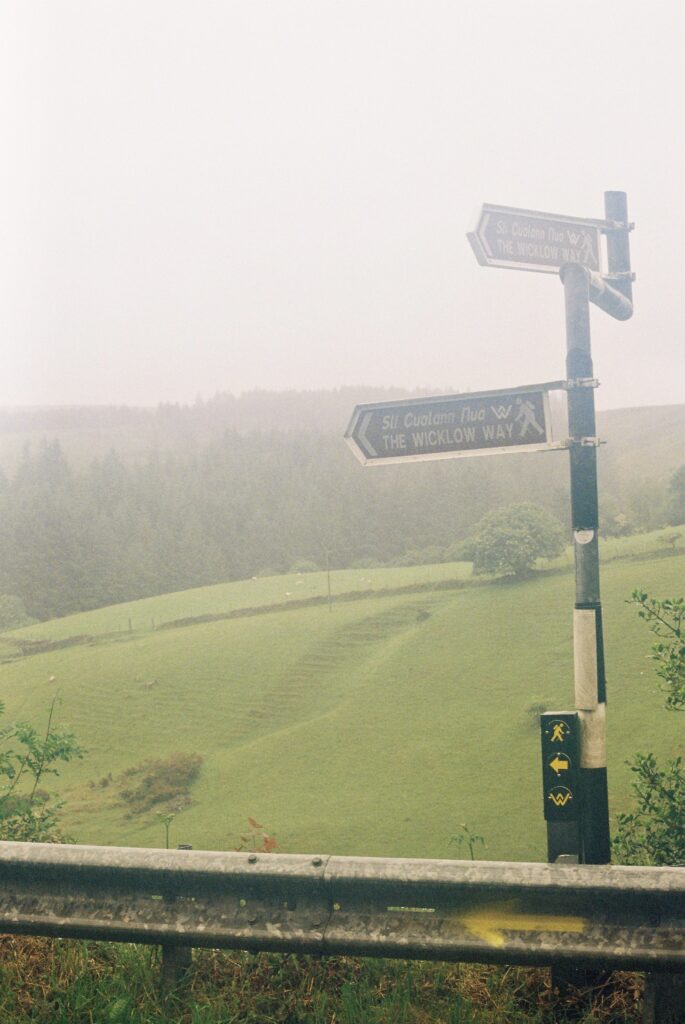
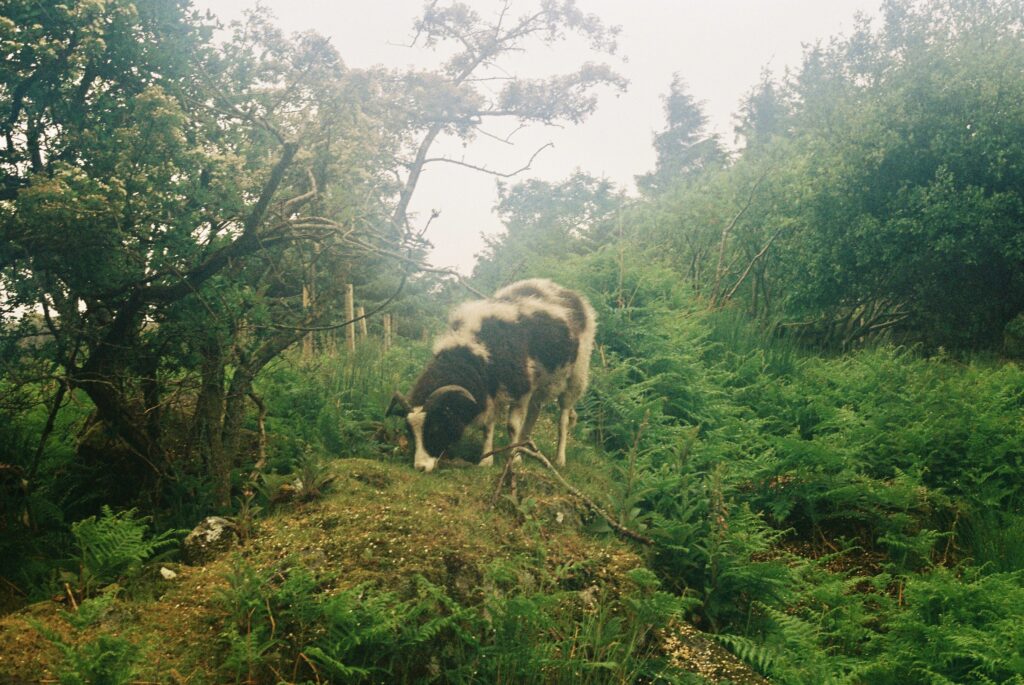
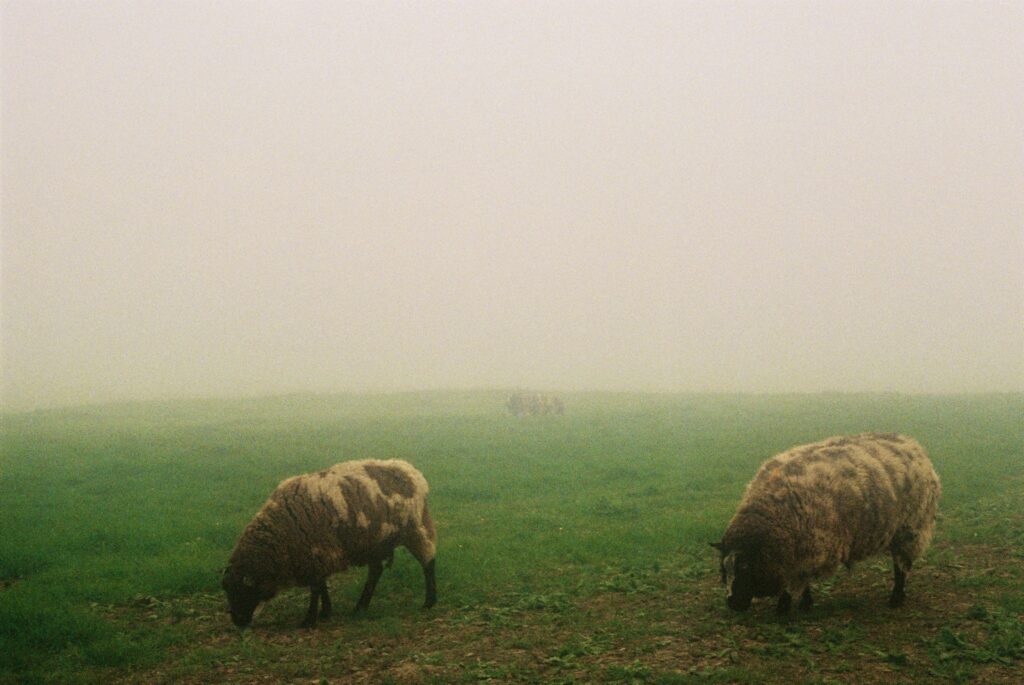

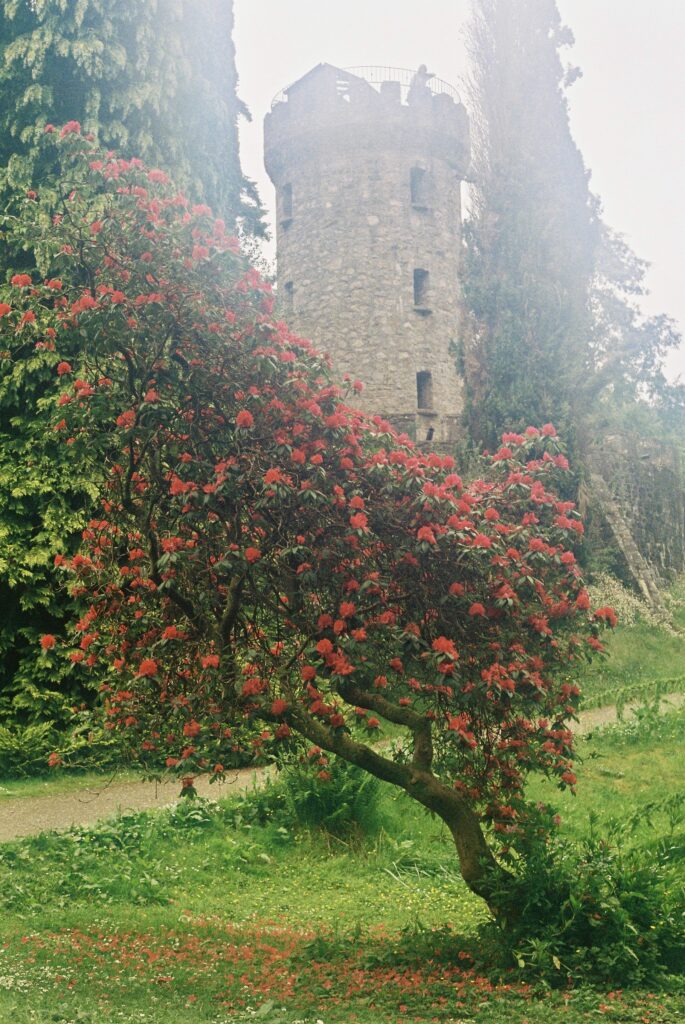
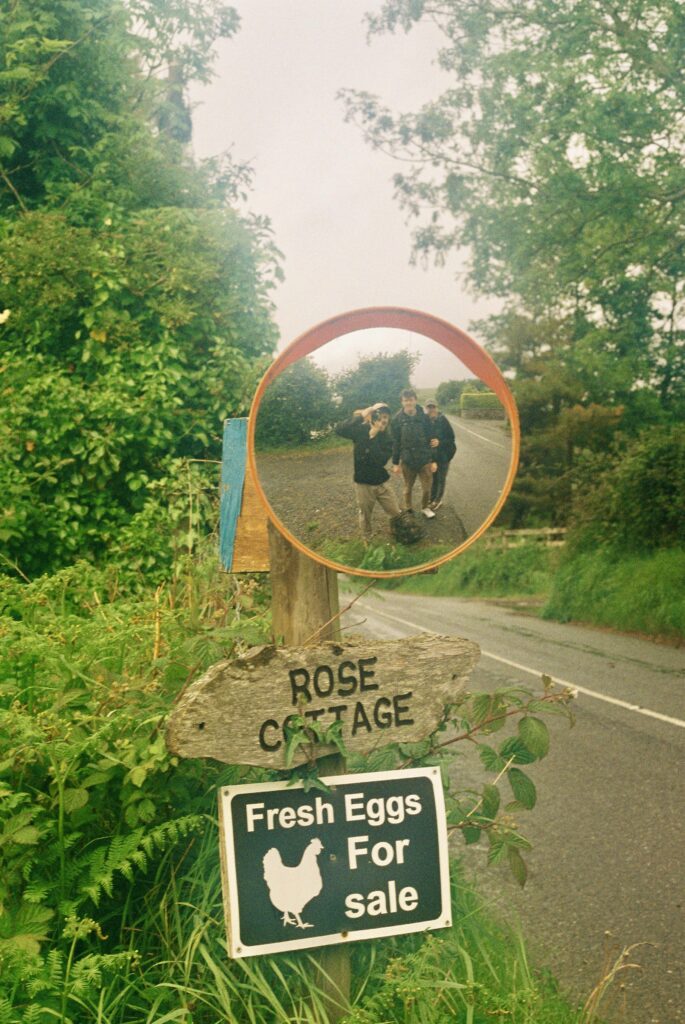
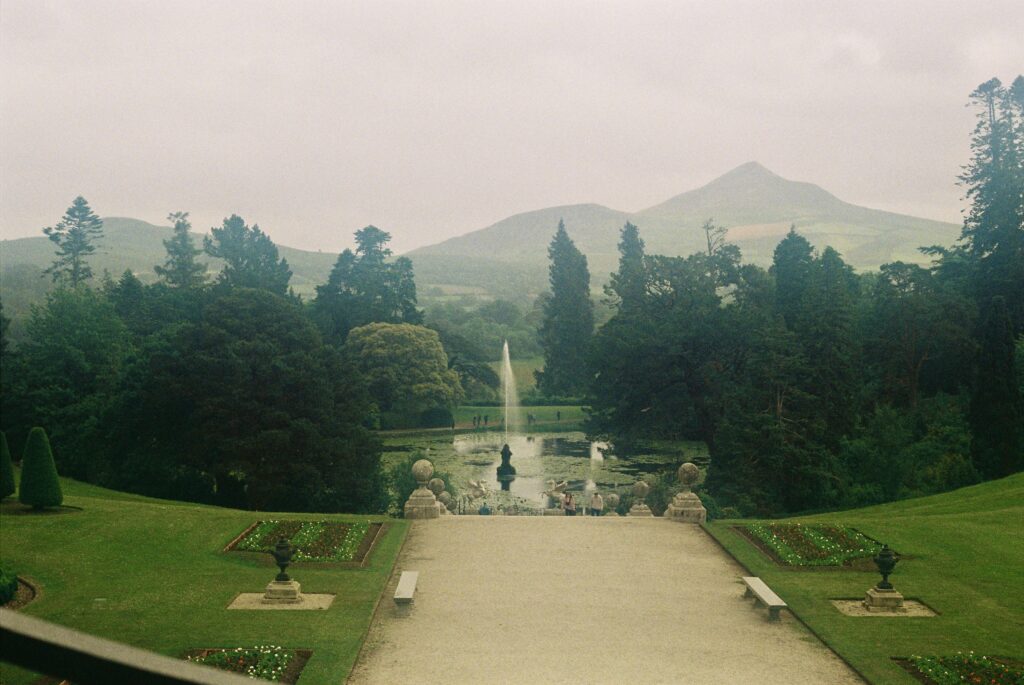
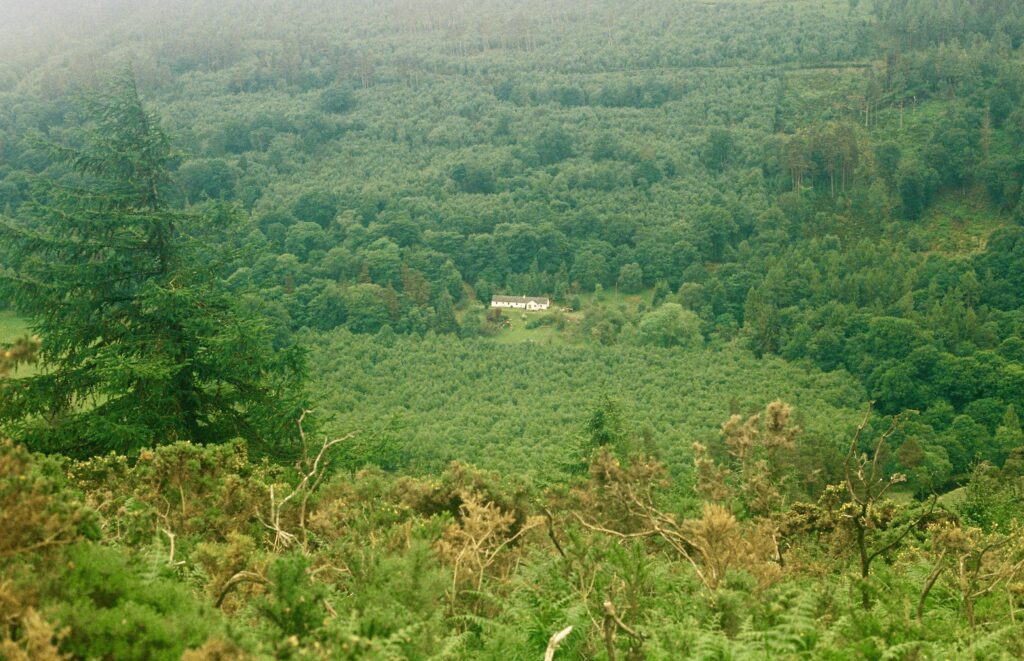
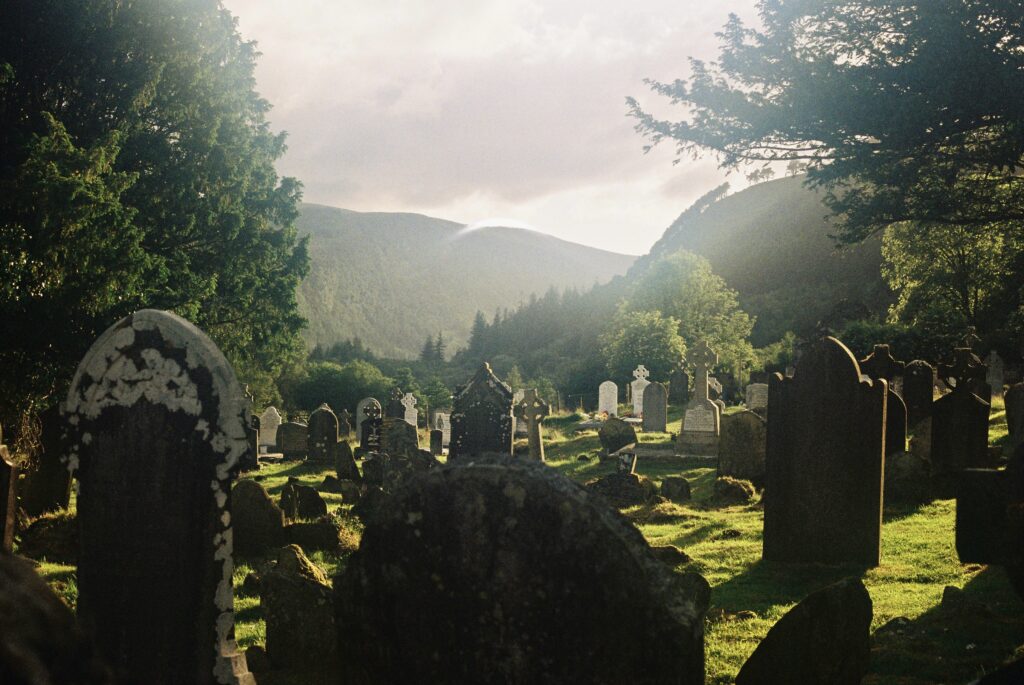
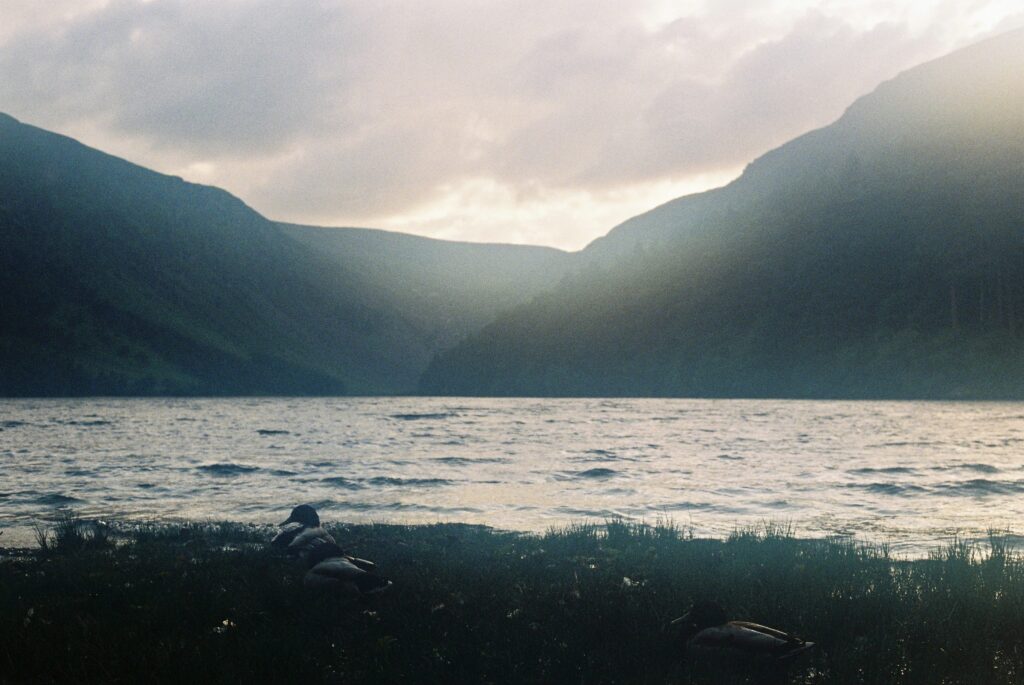
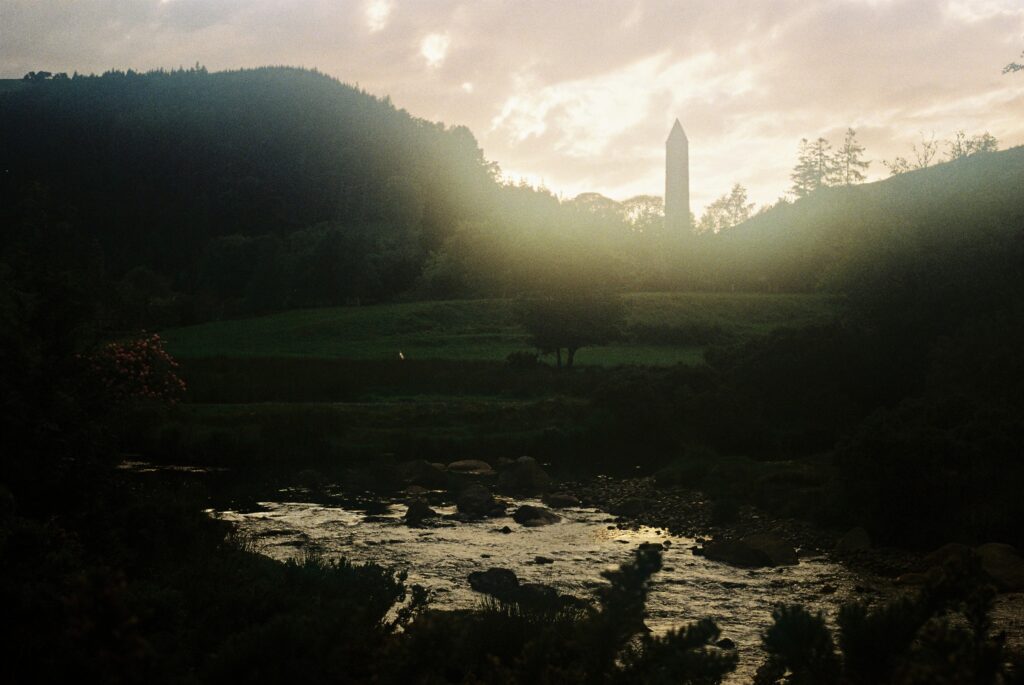
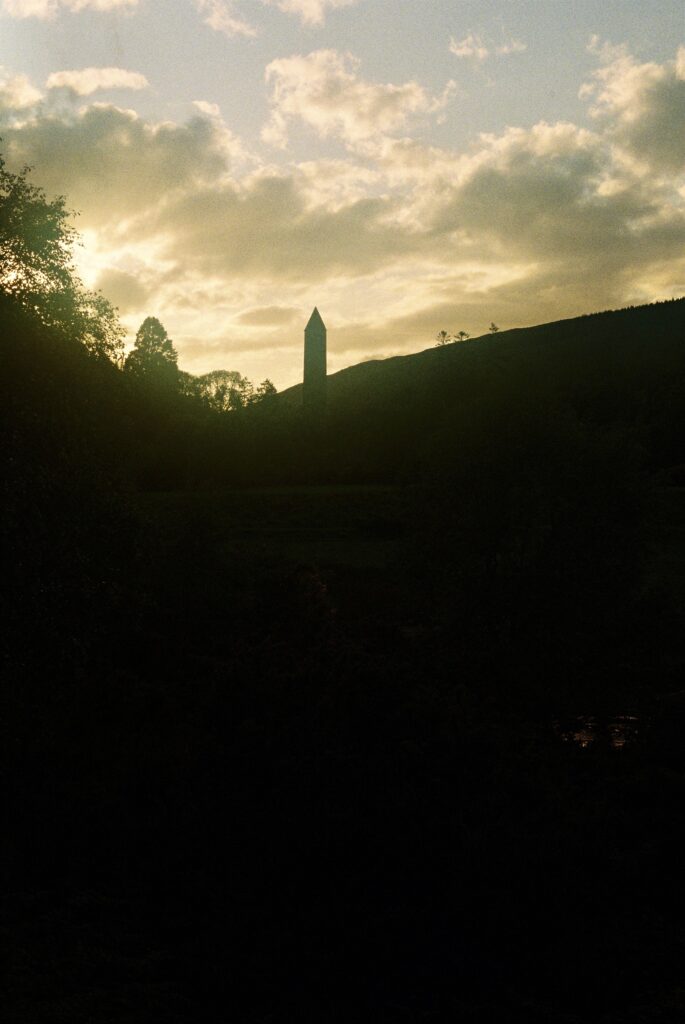
The End.
I’ll be in Dublin until August 31st, enjoying my epilogue and working on my thesis- adapting the Epiphanies of James Joyce into song and interactive animation. If you’d like to connect and hear more about my work (or just grab a coffee), feel free to reach out:
owenemerson4@gmail.com
(083)-166-9456
Owen
- Richard MacDonnell (scholar) – Wikipedia (no date). Available at: https://en.wikipedia.org/wiki/Richard_MacDonnell_(scholar) (Accessed: 7 June 2025).
↩︎ - Quinlan, R. (no date) Landmark Dalkey home sold for €10.65m in off-market deal, The Irish Times. Available at: https://www.irishtimes.com/life-and-style/homes-and-property/landmark-dalkey-home-sold-for-10-65m-in-off-market-deal-1.4655810 (Accessed: 7 June 2025).
↩︎ - This is an oversimplification. Joyce’s notion of Epiphany is actually propounded in his work Stephen Hero, an unpublished variation of “Portrait of the Artist” written several years earlier. ↩︎
- Joyce, J. (1944) Stephen hero : a part of the first draft of A portrait of the artist as a young man /. New Directions,.
MacDuff, S., McFadzean, A. and Beja, M. (eds) (2024) Collected Epiphanies of James Joyce: A Critical Edition. University Press of Florida. Available at: https://doi.org/10.5744/9780813070674.
↩︎
